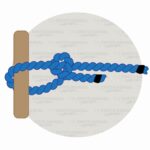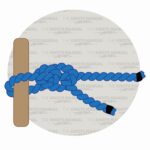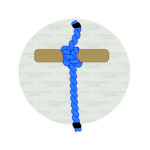The Lighterman’s Hitch is a simple, yet strong hitch that attaches a mooring line to a bollard.
It has other names as well, like the Tugboat Hitch, Backhanded Mooring Hitch, Towboat Hitch, and Caspian Hitch.
Quick Guide: Tying a Lighterman’s Hitch
To tie the Lighterman’s Hitch, you’ll need a long section near the end of the rope, depending on how large the bollard is in diameter. It involves 5 full turns around the bollard.
To begin, wrap the end of the rope twice around the bollard (steps 1-1b). Then create a bight on the working end, pass it under the standing end, and over the bollard (steps 2-2b). Do the fourth wrap around the top of the bollard (steps 3-3a). Then create another bight, pass it under the standing end, and over the bollard to finish the fifth turn (steps 4-4b).
For temporary hitches, there’s no need to secure the knot – you can simply wrap it around the standing end once. But for a more reliable finish, tie two half-hitches around the standing end. For even more strength, you can do three or four turns around the post in step 1.
Tip: When tying the knot, tighten and dress it after each wrap. Make sure that all strands are sitting neatly next to one another. It’s also worth noting that all turns around the bollard should be made in the same direction.
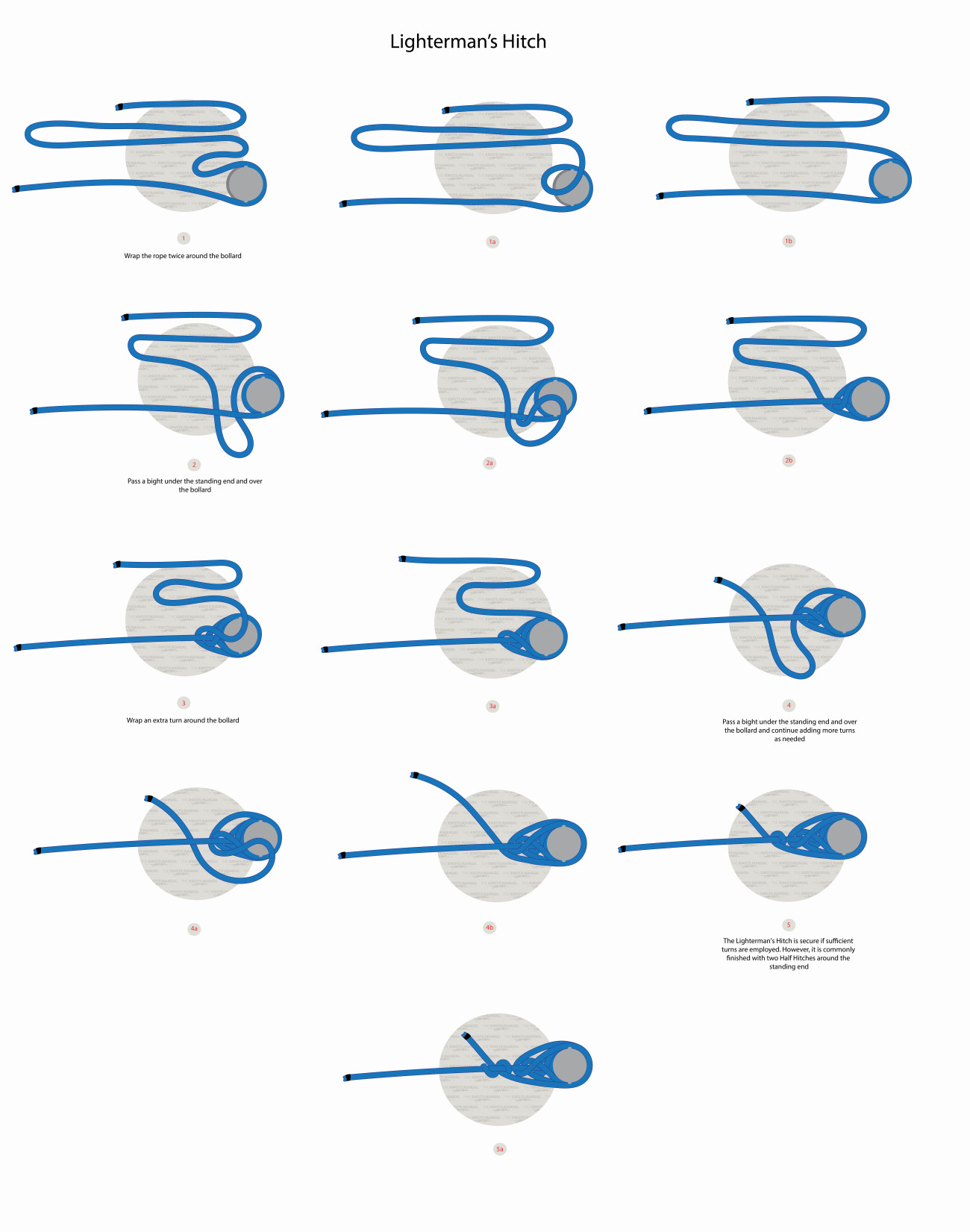
Pros and Cons of the Lighterman’s Hitch
The main advantage of the Lighterman’s Hitch is that it is very easy to tie. If not secured with two half-hitches, it couldn’t even realistically be considered a knot. Rather, it’s a series of alternating turns around the bollard.
Another benefit is that it is a very strong knot. It’s said to have a strength close to 100% of the rope-breaking strength. It isn’t as secure as the Tensionless Hitch, but it can be tied in a much quicker time and provides similar results.
Its third advantage is that it doesn’t jam – even when loaded with extremely heavy loads. That’s because the Lighterman’s Hitch doesn’t consist of any knots. Instead, its strength comes from many turns around the bollard.
Common Uses for the Lighterman’s Hitch
Most commonly, the Lighterman’s Hitch is used in boating and sailing. It’s used to attach tow and mooring lines to bollards. For example, it can be used when towing a boat, when tying one boat to another, or when mooring a boat. It’s preferable over other hitches because it’s very easy to tie, and you can untie it just as easily because it doesn’t jam.
You can also use the Lighterman’s Hitch in other general applications. Use it anytime you need a strong hitch and you have access to the free end of a support. For example, you can use it when rigging a rope around tree stumps or fence posts.
Knots Like the Lighterman’s Hitch
Tensionless Hitch: Considered to be the strongest hitch out there, even stronger than the Lighterman’s Hitch. Its strength comes from many turns around the support and a perfect exit angle of the standing end. To tie it, you’ll need a carabiner.
Anchor Hitch: A very strong hitch, which involves two turns around the post and two half hitches. It’s stronger than the Round Turn and Two Half Hitches Knot because the working end is passed underneath both turns. It’s similar in strength to the Lighterman’s Hitch, only much harder to untie. It’s usually used for permanent applications, like tying a rope to an Anchor.
Round Turn and Two Half Hitches: Another strong hitch, which is made with two turns around the post and two half hitches. It’s most commonly used in general situations because it’s very reliable, can be tied quickly, and also unties very easily.
Halyard Hitch: A strong hitch that’s usually used to permanently attach a rope to a halyard. It can be tied very quickly and it’s very reliable. Its only downside is that it can be near-impossible to untie after it has been loaded with enough force.
Mooring Hitch: A simple quick-release hitch. It’s usually used for temporarily mooring a boat. It isn’t as strong as the Lighterman’s Hitch.
Step-By-Step Guide: How to Tie a Lighterman’s Hitch Knot
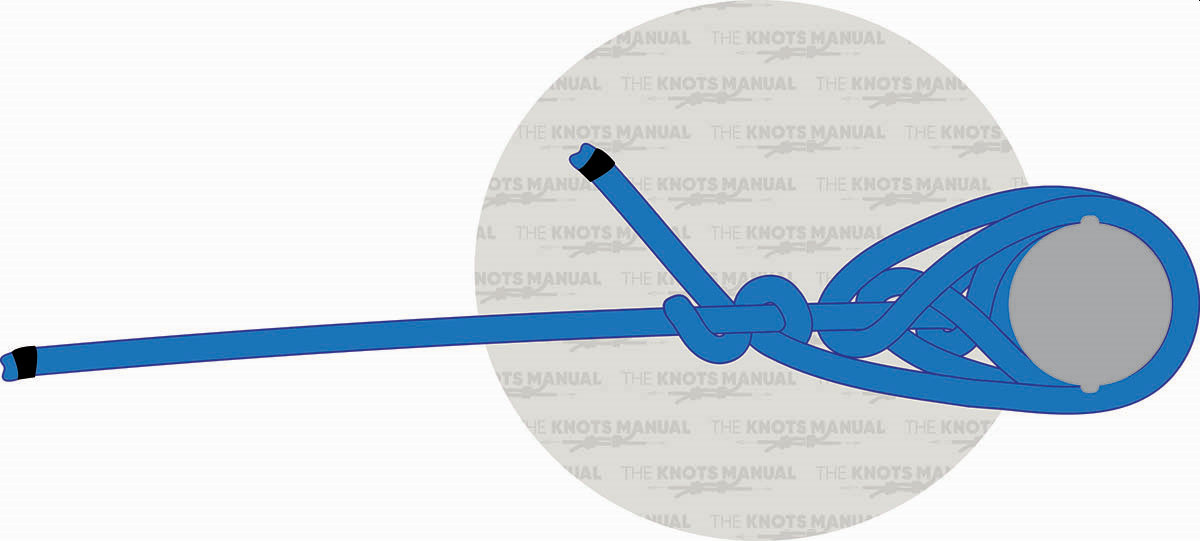
A step-by-step guide on how to tie a Lighterman’s Hitch.
Step 1:
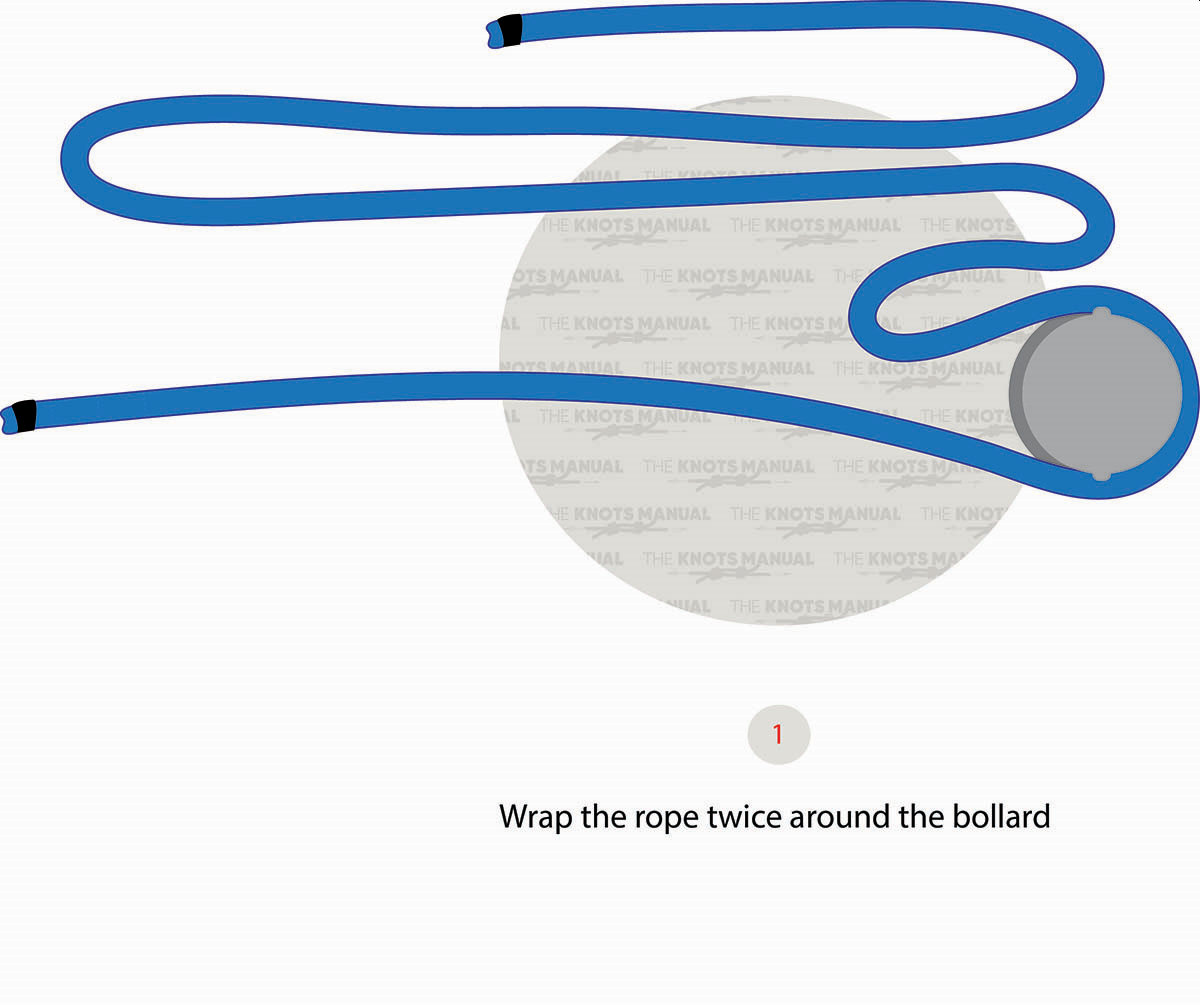
To tie the Lighterman’s Hitch, you’ll need a very long section near the end of the rope. That’s because, in total, it involves 5 wraps around the support (bollard).
Step 1a:
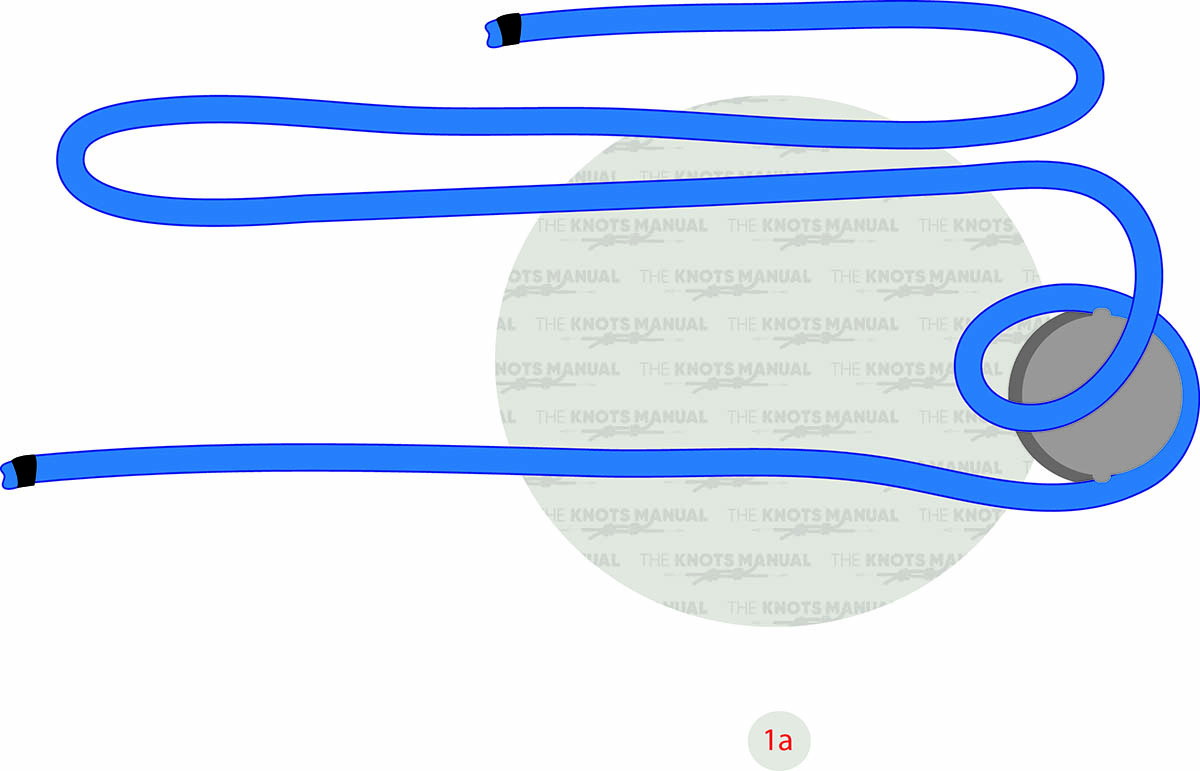
Wrap the working end around the support.
Step 1b:
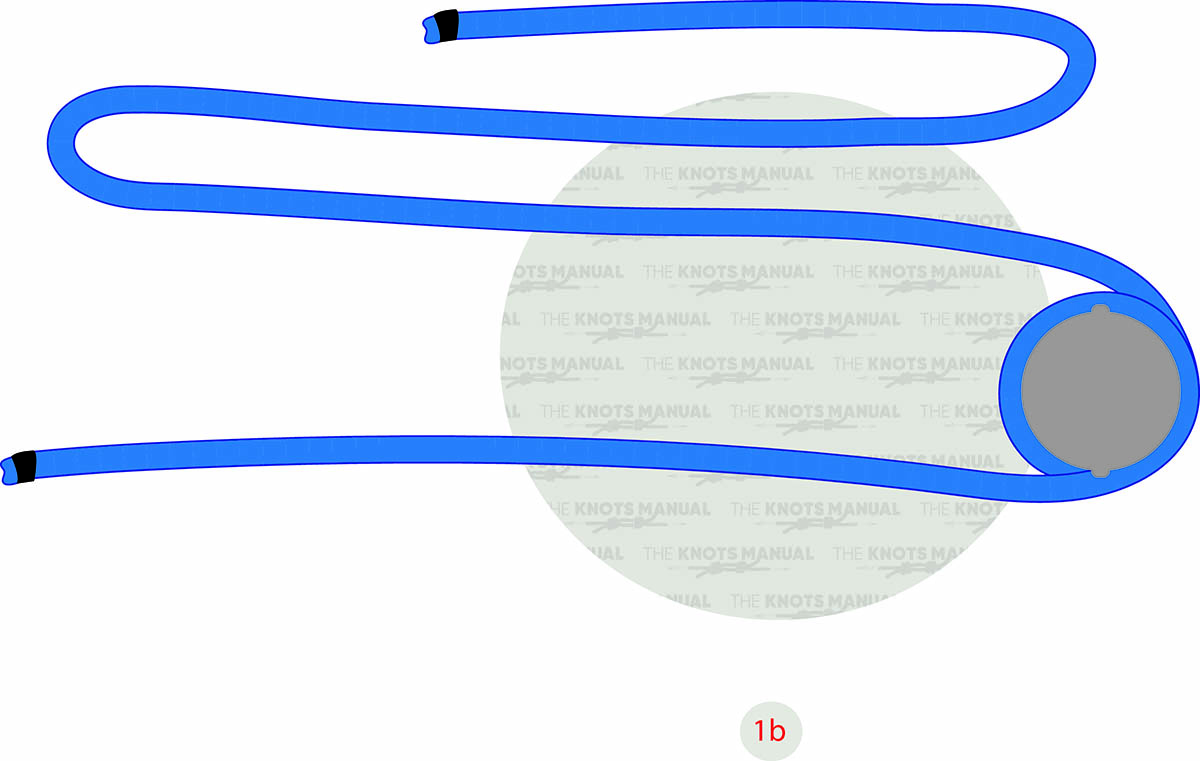
Do another full turn, making 2 wraps around the support in total.
Step 2:
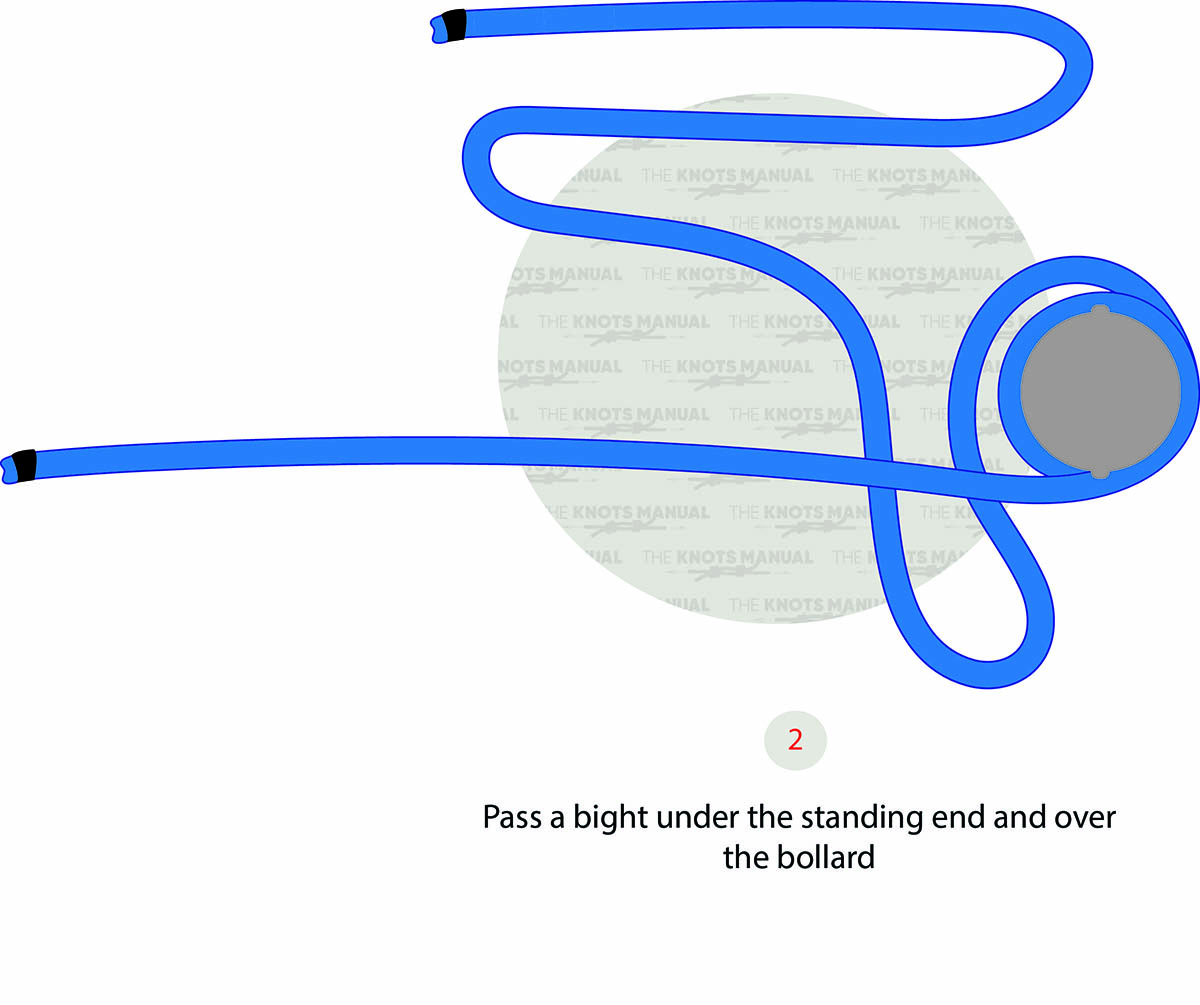
Create a bight on the working end and pass it underneath the standing end.
Step 2a:
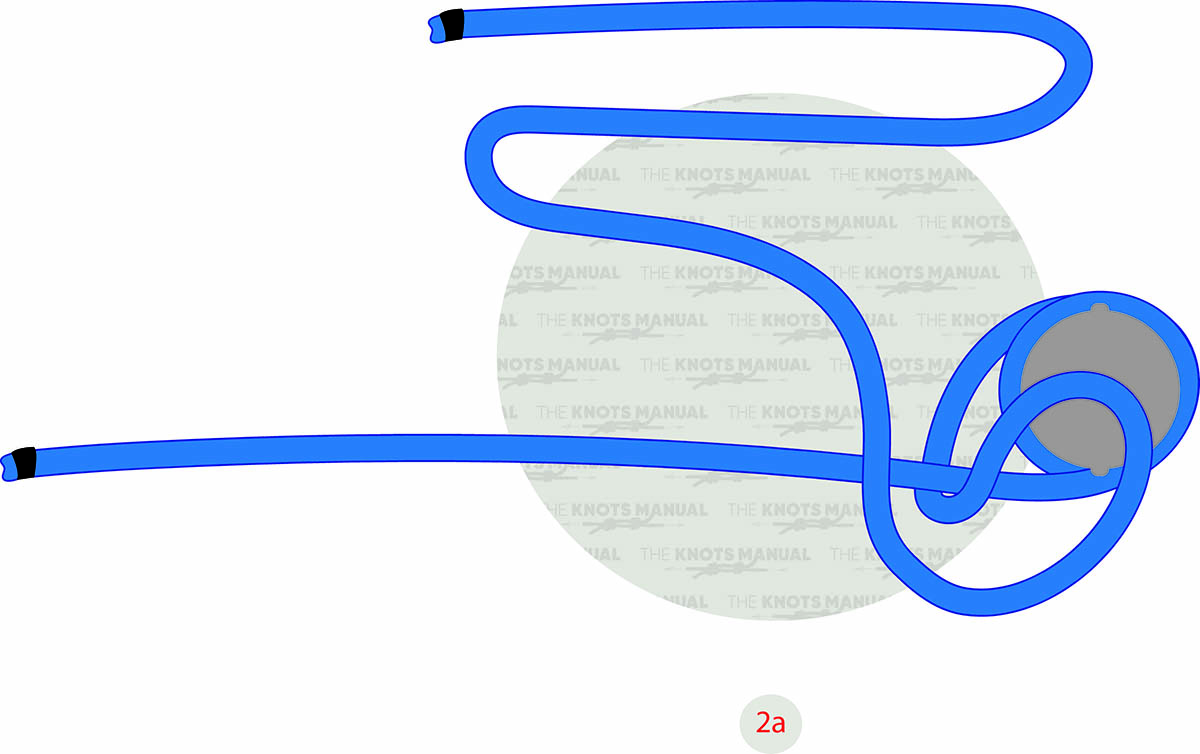
Place the bight over the support.
Step 2b:
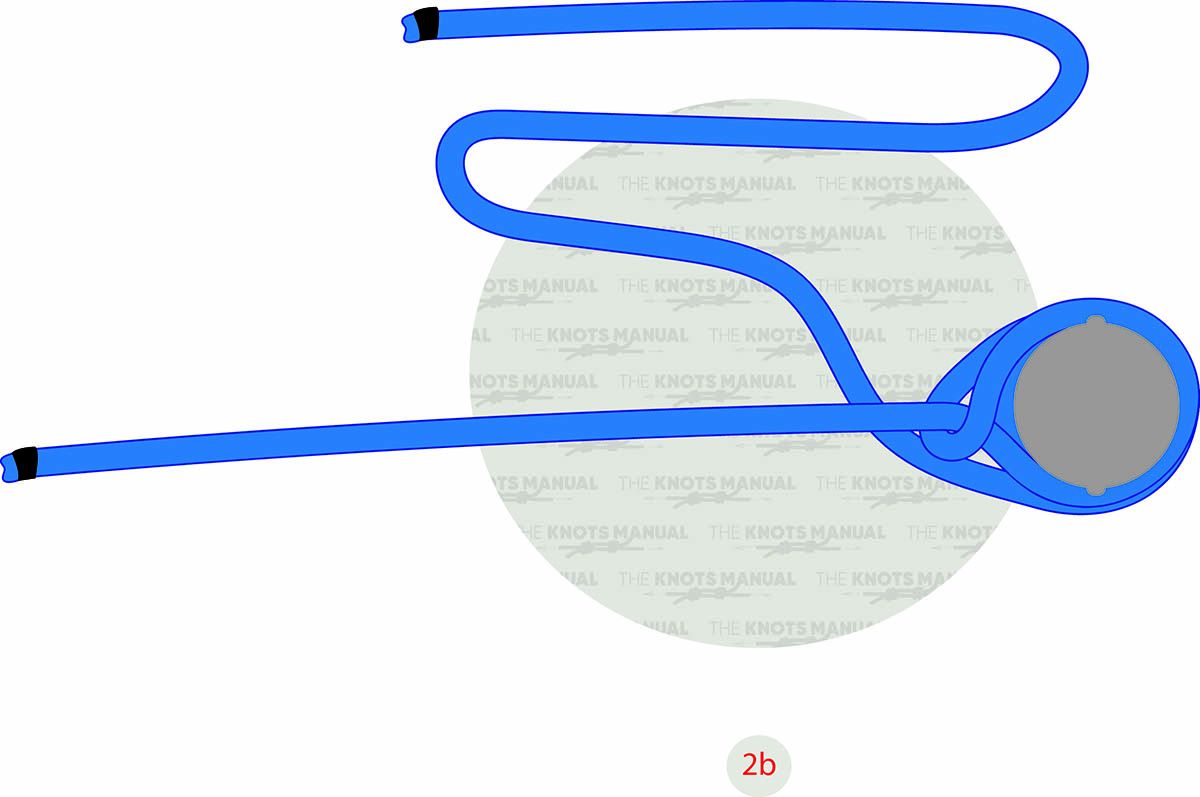
Dress the knot made so far, making sure that all wraps are sitting next to one another.
Step 3:
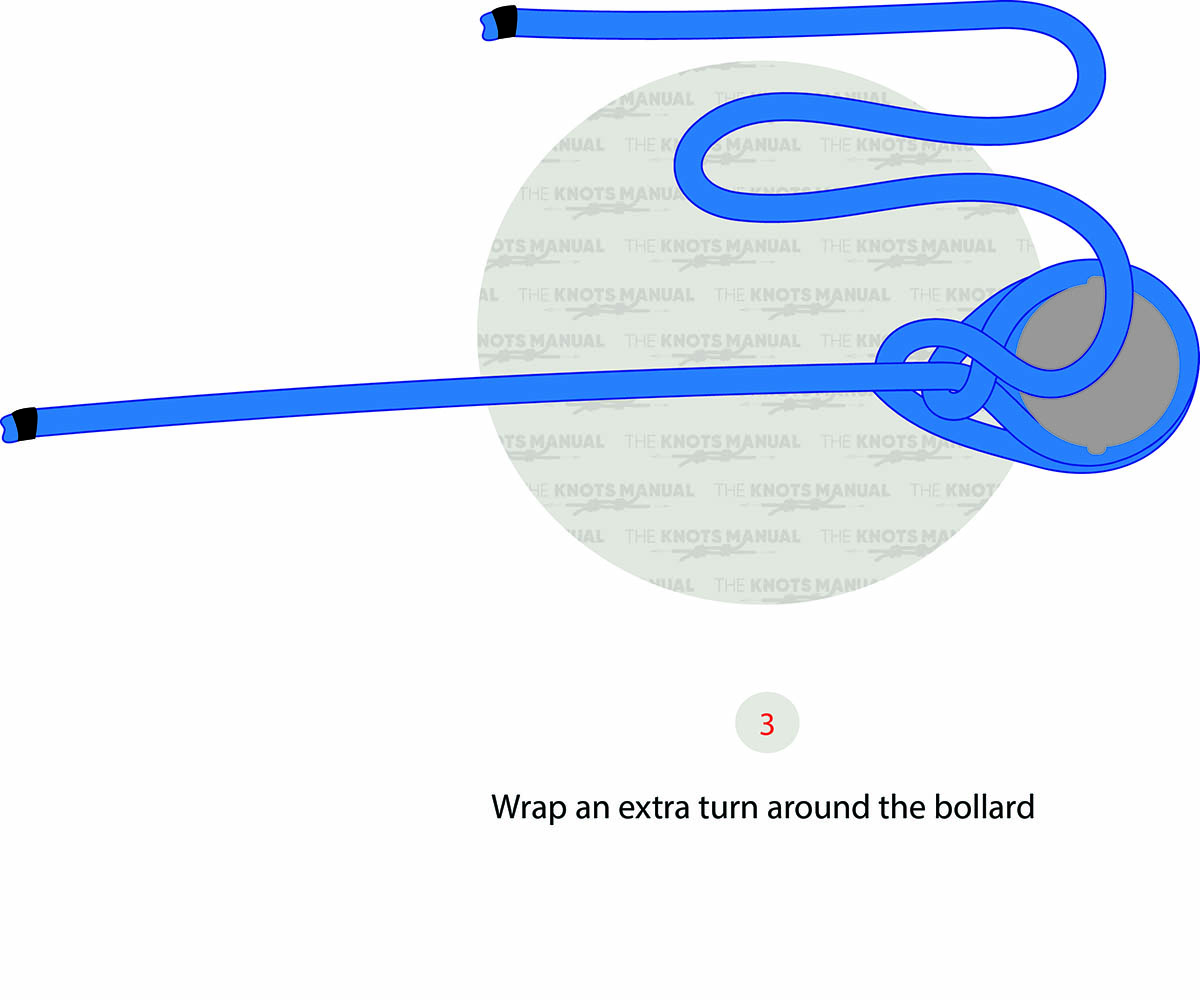
Do another wrap around the top of the support.
Step 3a:
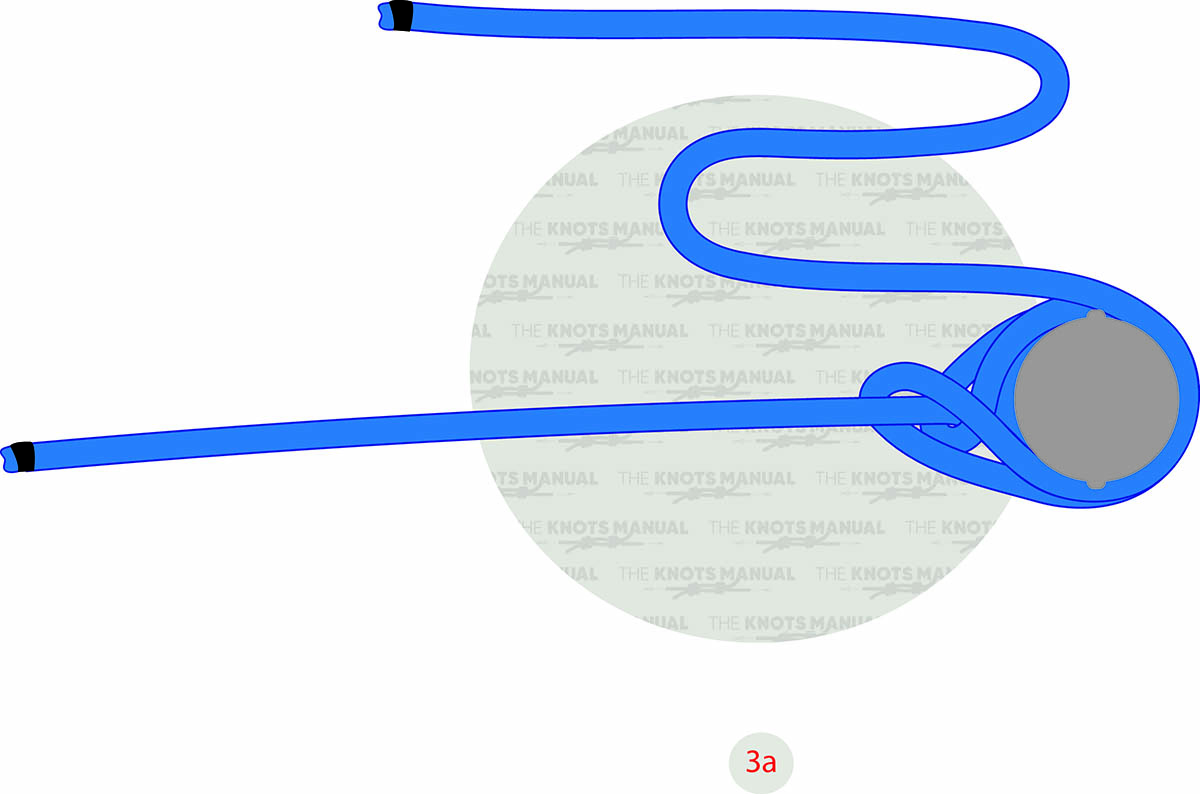
Dress and tighten the knot.
Step 4:
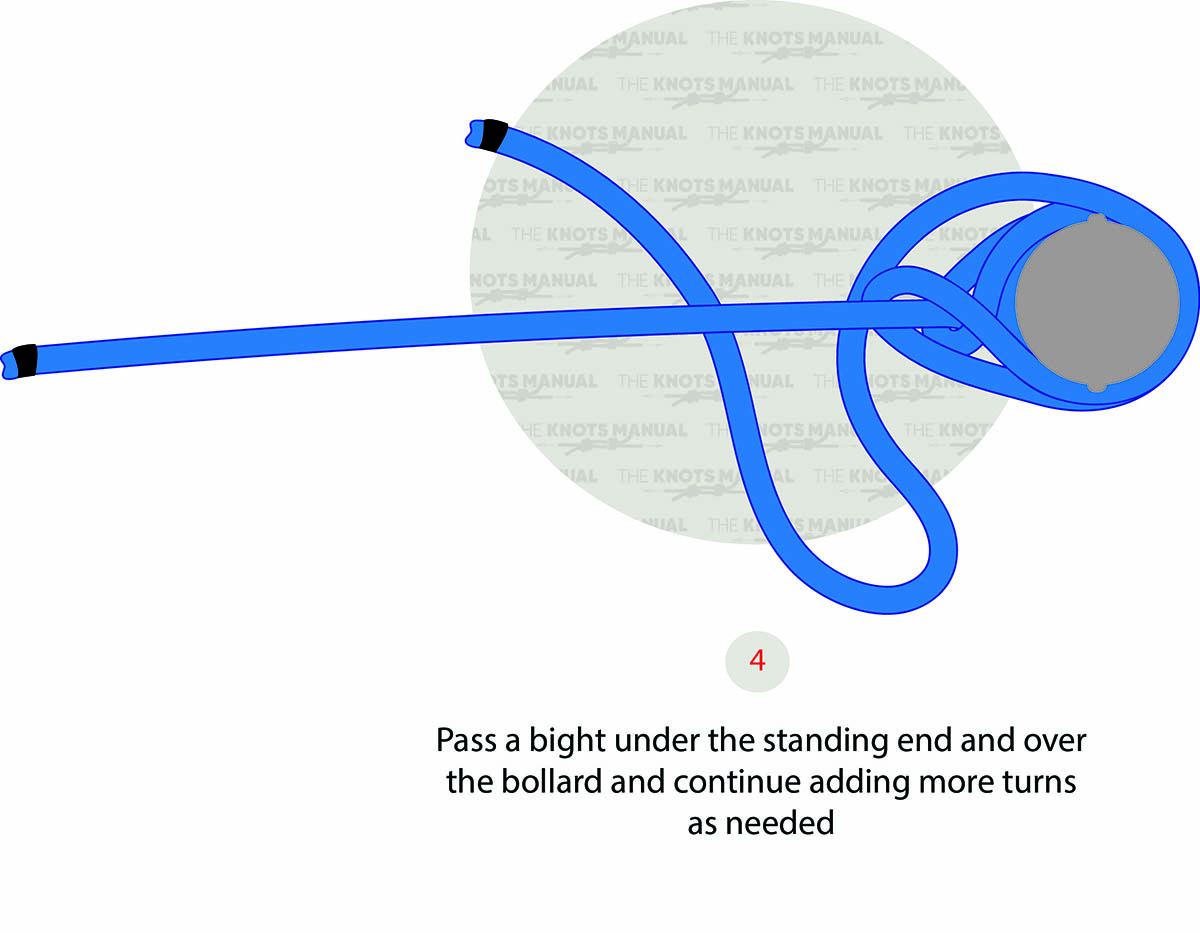
Create another bight and go underneath the standing end.
Step 4a:
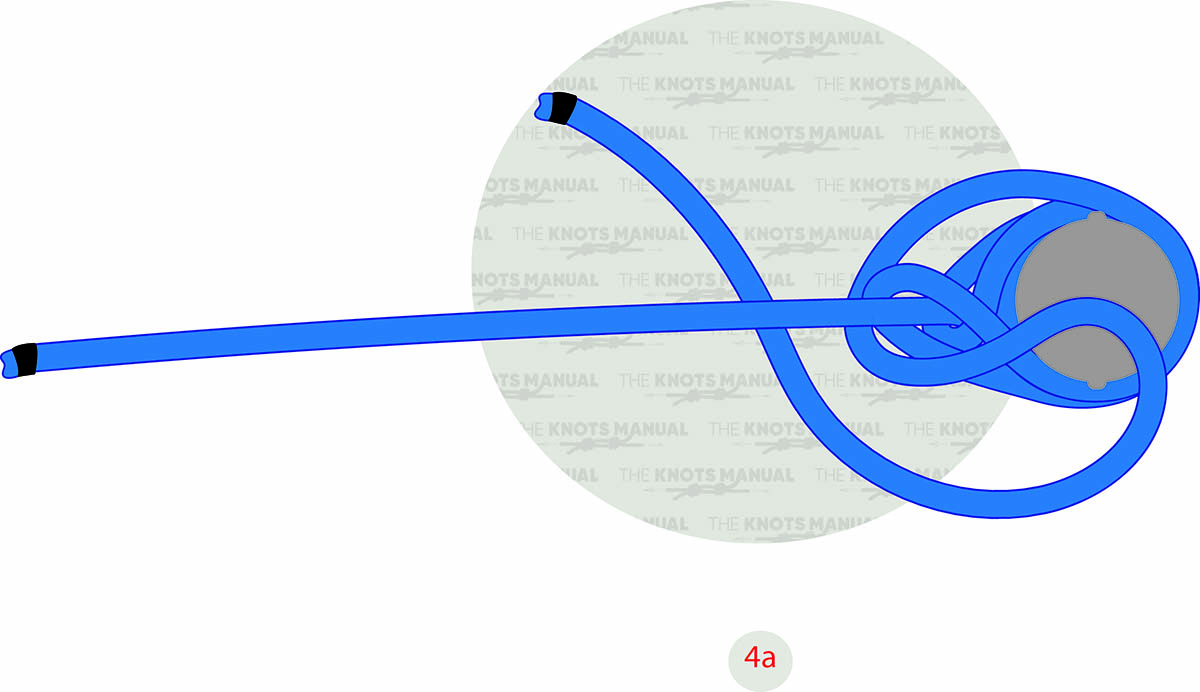
Place it over the support.
Step 4b:
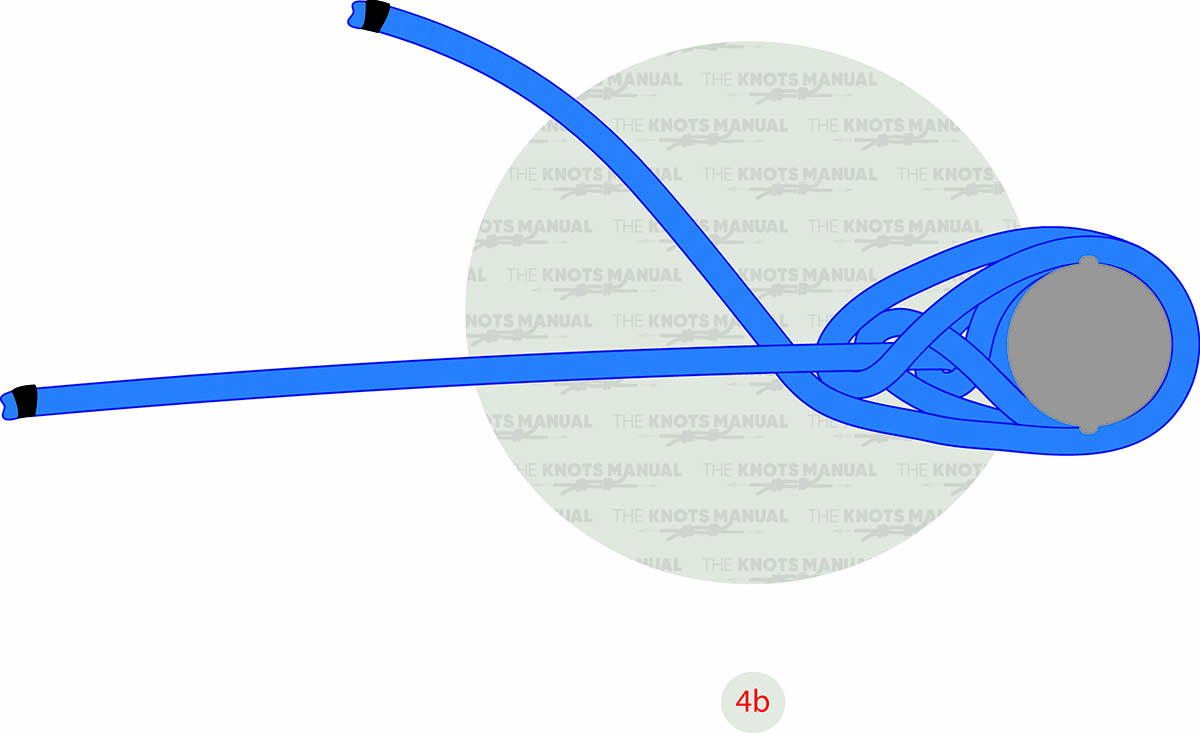
Tighten and dress the knot made so far.
Step 5:
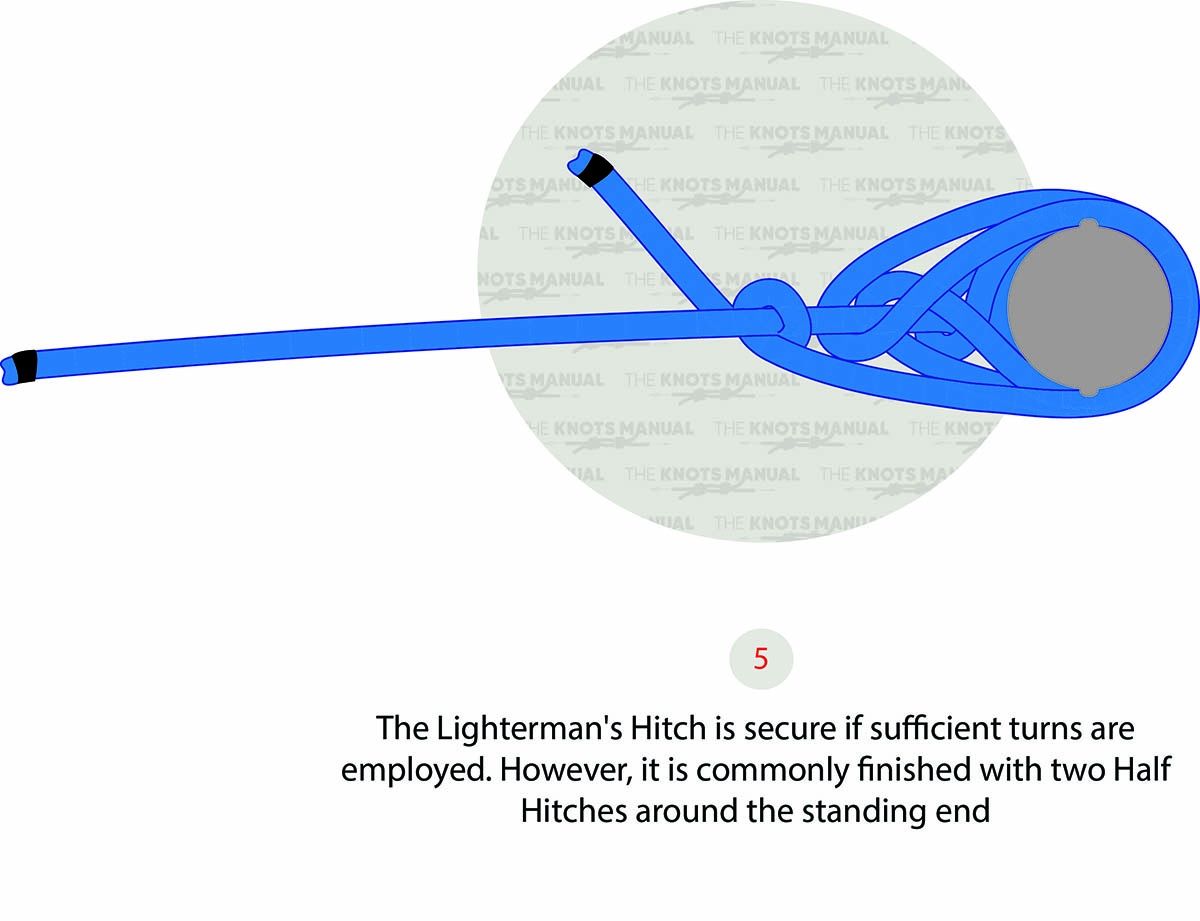
Wrap the working end around the standing end and tuck it under itself, making a half-hitch in the process. Tighten everything before proceeding.
Step 5a:
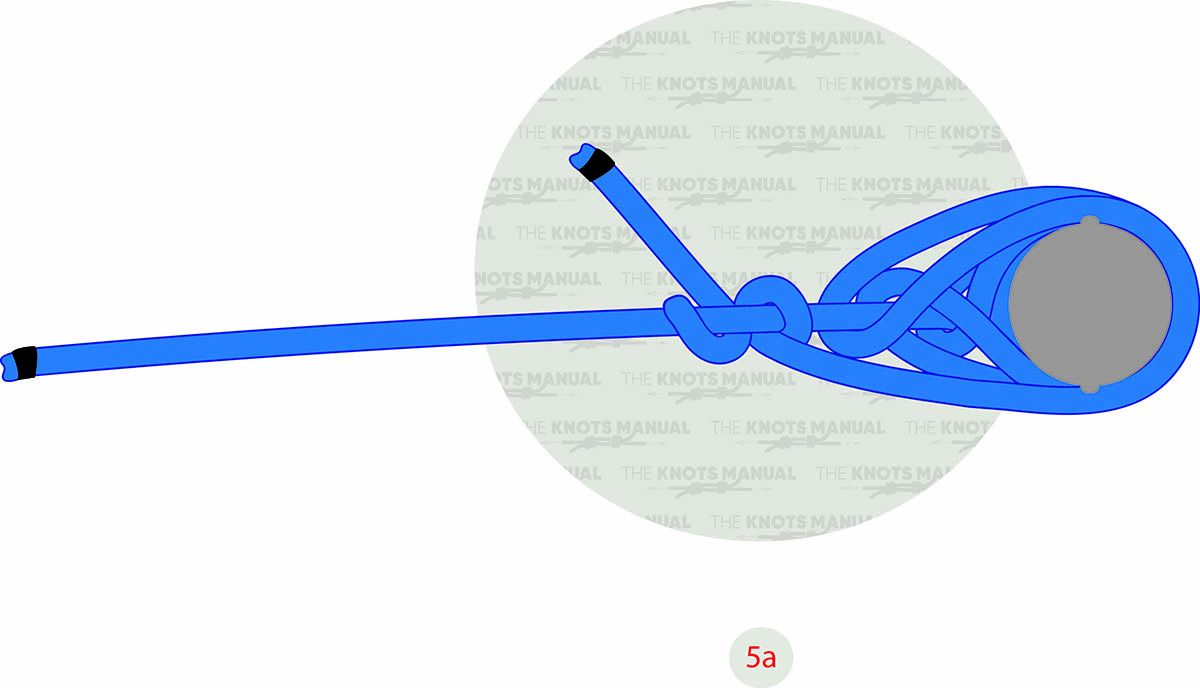
Do another half-hitch to finish the knot.

